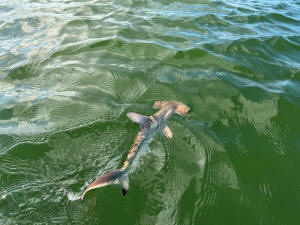|
The
so-called haven for hammerhead hatchlings, who are less than a
year old, was discovered near Isabela Island, the Galapagos'
largest island, and offers refuge for the sharks during mating
and early development stages.
"The discovery of these new breeding areas is very important,
especially for the hammerhead shark," said park ranger Eduardo
Espinoza in a statement on Friday from the Galapagos National
Park.
"It is an iconic species for the Galapagos, but it is in
critical danger of extinction."
The International Union for Conservation of Nature (IUCN)
considers the scalloped hammerhead shark, the species found in
the Galapagos, as "critically endangered."
It is largely threatened by commercial fishing and demand for
their fins, which are used to make shark fin soup.
Researchers spent months scouring the archipelago for possible
nursery sites as part of a hammerhead shark monitoring program.
Scientists with the national park had previously identified two
other locations with similar characteristics on nearby islands.
"We managed to include these nurseries in a list of important
areas for shark conservation, a new protection category under
the IUCN," Espinoza said.
Researchers are monitoring the nurseries to track the young
shark population in nursery areas and to follow their migration
patterns.
The Galapagos Islands with its unique wildlife was critical to
British scientist Charles Darwin's theory of evolution. It is
home to many species not found elsewhere such as giant
tortoises, flightless cormorants and marine iguanas.
(Reporting by Alexandra Valencia; Writing by Kylie Madry;
Editing by Bill Berkrot)
[© 2022 Thomson Reuters. All rights
reserved.] Copyright 2022 Reuters. All rights reserved. This material may not be published,
broadcast, rewritten or redistributed.
Thompson Reuters is solely responsible for this content.

|
|




